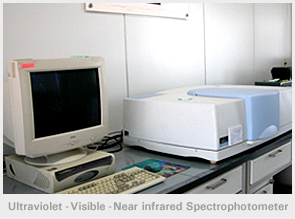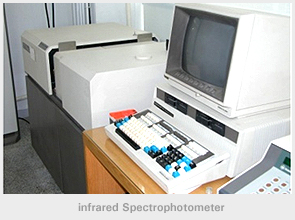

HOME > Test and Analysis > Optical Properties Test


- KS L 2514 Testing method on transmittance, reflectance for daylight and solar radiation and solar heat gain coefficient of flat glass
- JIS R 3106 Testing method on transmittance, reflectance and emittance of flat glasses and evaluation of solar heat gain coefficient
- ISO 9050 Determination of light transmittance, total solar energy transmittance, ultraviolet transmittance and related glazing factors
- EN 410 Determination of luminous and solar characteristics of glazing
- ASTM E424 Solar Energy Transmittance and Reflectance of Sheet Materials
- ISO 13837 Method for the determination of solar transmittance
- ASTM D 1003 Haze and Luminous Transmittance of Transparent Plastics
- ASTM E 903 Solar Absorption, Reflectance and Transmittance of Materials Using Intergrating Spheres


- Transmittance, %
- Reflectance, %
- Absorptance, %
- Solar Transmittance %
- Solar Reflectance, %
- Solar Absorptance, %
- Ultraviolet Transmittance, %
- Ultraviolet Reflectance, %
- Ultraviolet Absorptance, %
- Visible Transmittance, %
- Visible Reflectance, %
- Visible Absorptance, %
- Emissivity
- U value W/㎡ K
- Thermal Resistance, ㎡ K/W
- Relative Heat Gain W/㎡ C
- Shading Coefficient
- Solar Heat Gain Coefficient
- Solar Heat Excluding Coefficient
- Total Rejected Solar Energy
- Total Solar Energy Transmittance, Solar factor


The ratio of velocity of penetrating or reflecting light against velocity of incoming light to an object is measured using a spectrophotometer. While UV-VIS-NIR Spectrophotometer measures spectrum distribution in the range of 185nm~3,300nm, FT-IR Spectrophotometer measures spectrum distribution in the range of 4000cm-1~200cm-1(2500nm~50,000nm).

Larger than 5cm(W) x 5cm(L)

Information about spectral and thermal characteristics of glass for construction, industrial use and vehicles






